Last Updated on June 14, 2025 by Maged kamel
Product of inertia Ixy-for the right-angle triangle-Case-1.
Step-by-step guide for the calculation of the product of inertia for the right-angle triangle-Case-1.
1-For the product of inertia Ixy estimation, a horizontal strip will be used. The strip width is dy, and its height is x from the external axis X, which passes the triangle base.
Since the strip height starts from the base and intersects with line Bc, the y value of the strip is the same y value for the equation of line BC. y=-h/b*x+h.
We can check the equation by substituting the values of x =0 and x=b and check whether this y value is satisfied or not.
2- The moment of inertia due to that strip = dA*xcg*ycg, our xcg x/2, while ycg = y.
3- We will substitute the value of dA, which is (x*dy), and try to make all our items a function of y, since we will integrate from y=0 to y=h, for the Ixy value.
We have x^2=(b^2/h^2)(y^2-2yh+h^2), we can substitute this value and readjust the terms. dA=xdy, dIxy=xdy(x/2)y=(1/2)x^2y dy.
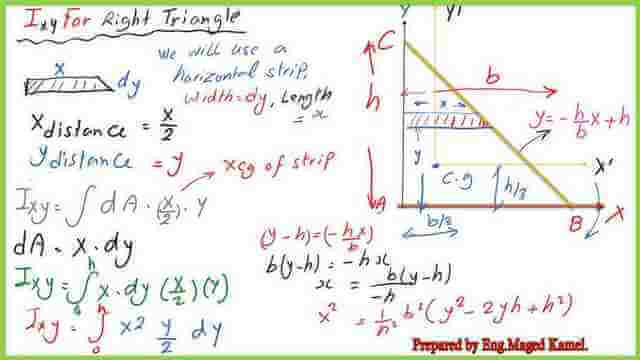
4-After performing the integration, the summing of items will be continued for the matched items.
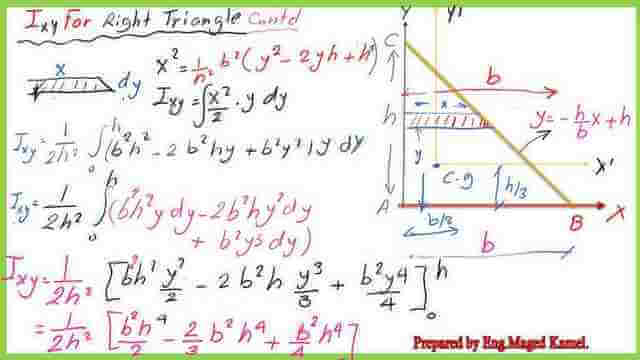
Finally, we get the value of the product of inertia- as Ixy=h^2b^2/24 about the x and y axes intersecting at the left corner A. The product of inertia is written as Ixy=(Height^2base^2/24).
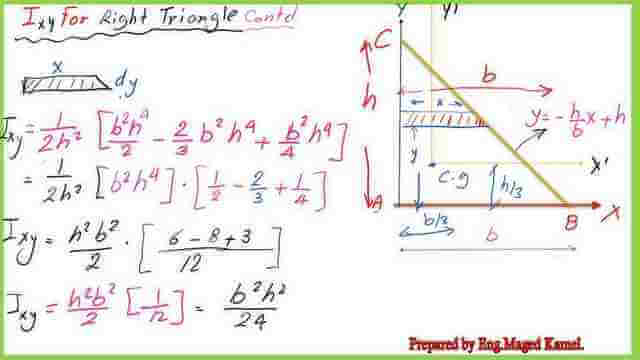
Product of inertia-for-right-angle triangle-Case-1 at the Cg.
5-For the product of inertia for-right-angle triangle-Case-1 at the Cg, we will use the parallel axes theorem and deduct the product of A*(x-bar)*(y bar) from the product of inertia product of inertia at the external axis, the final value of the product of inertia, for x bar it is=b/3. In contrast, y bar it is =h/3. The product of A*xbar*ybar=1/2*(b*h)*1/3b*1/3h=1/18*(b^2*h^2).
6- Finally, we get Ixyg=b^2h^2/24-1/18*(b^2*h^2).)=(-)b^2*h^2/72.
The product of inertia for the right-angle triangle case-1 at the CG has a negative sign. Refer to the next image for more details. The moment of inertia about the CG of a right-angle triangle case-1=(-)*(base)^2*height^2/72.
We can get any value for the product of inertia for any point by adding the product of inertia value at the Cg to the product of the area by the x*y values, but for points below the Cg and to the right side, the product of inertia value will be (-ve)+(-ve) a negative value. This will apply, for instance, for point line AB.
Point C is above and to the left of the Cg, so we expect the product of inertia to have a negative value.
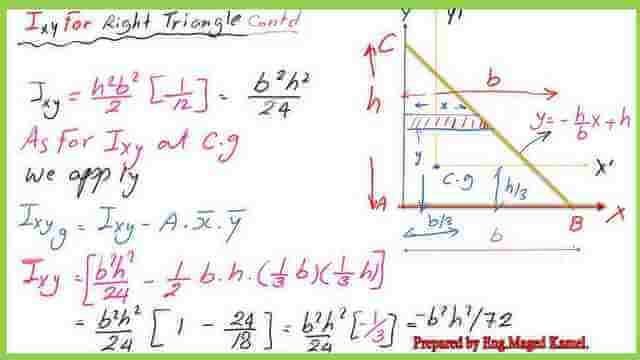
There is a negative sign in the expression for the product of inertia Ixy at the Cg of the triangle.
As we can see, the final result matches the values included in the table of inertia for plane shapes.
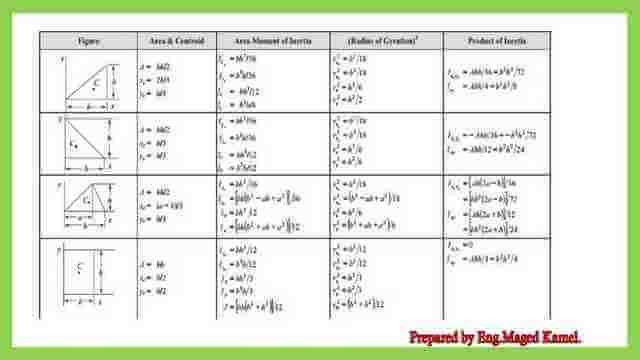
This is the PDF file used in the illustration of this post.
For an external resource, the Second Moment of Area for Standard shapes.
For the next post 10: Ix-the moment of inertia for right-angle-Ix-Case-2.